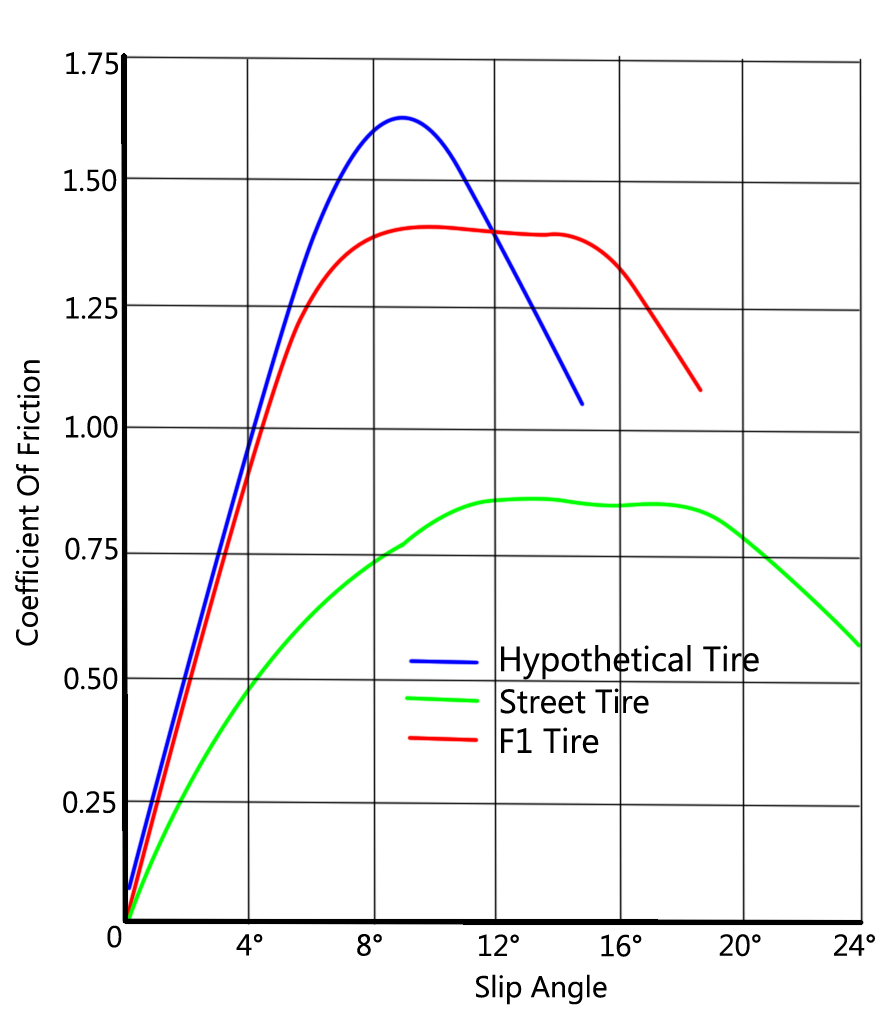back
Tire hapticsRolling tiresslip while producing grip;
there is a discussion and here is a chart: Normal driving on dry pavement rarely generates more than 0.5G, for which most tires develop grip nearly proportional to slip.The amount of slip varies with conditions and tire construction,but beyond some point, slip increases faster than grip, which eventually decreases.Tires audibly squeal as they begin to slip more than grip.As slip increases, tire squeals change to moans, then judders;in other words, the audible frequency decreases as slip increases.The amount of slip that is problematic varies among cars, tracks, sims and driving style.Worse, the amount of slip reported by game telemetry varies widely.However, the ratio of slip to grip is relatively constant for moderate grip levels,then increases more abruptly as tires approach their limits. Consequently, producing haptic feedback based on slip/grip works better than slip alone.Conveniently, haptic sensitivity also increases as frequency decreases e.g. from 600Hz to 30Hz. This encourages using (decreasing) frequency cues for (increasing) tire slip/grip haptics.
Loaded tire slip/gripCompletely unloaded tires generate no grip even when slip is massive.Rapid turns left provoke louder noises from right-side tires and vice versa. Similarly, front tires complain more loudly in panic stops. Consequently, tire haptic intensity should be modulated by tire load,helping sim drivers sort which tires are most stressed. |
|
maintained by blekenbleu |